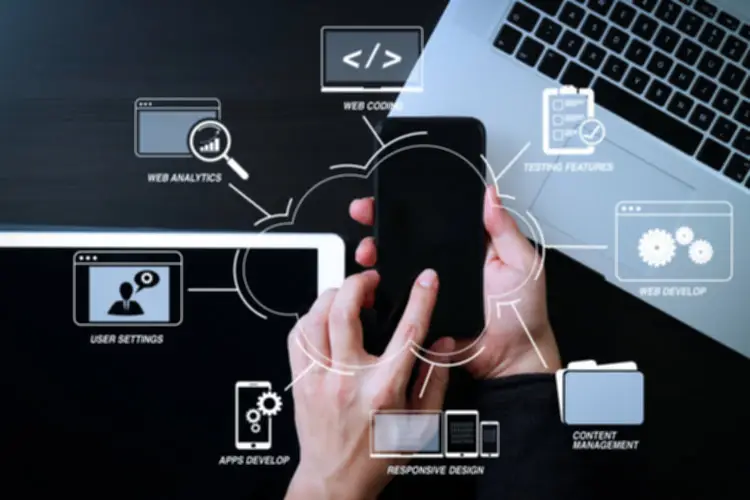What Is Optical Character Recognition Ocr Advantages, Applications & Tendencies
Accounting and bookkeeping corporations can elevate their companies by implementing OCR, ensuring correct and environment friendly data processing. Industries with customer-facing environments can use OCR to expedite processing times, resulting in heightened buyer satisfaction. To illustrate, when processing 10,000 paperwork, OCR methods encounter errors in only 1 to 4 documents, whereas human data entry personnel might have errors starting from a hundred to 400 paperwork. Sample Recognition OCR stands at the forefront of OCR technology, utilizing advanced algorithms to establish and match visual patterns in characters. This excels in recognizing and deciphering textual content, best for high-precision purposes like authorized paperwork and monetary reviews. Optical Character Recognition (OCR) is a game-changing tech device in our digital world.
OCR eliminates the need for manual typing by instantly converting printed or handwritten text into digital data. This permits organizations to hurry up document processing, enhance turnaround occasions, and allocate sources to extra strategic duties, finally boosting general productivity. One of the main advantages of OCR expertise is its capability to increase efficiency and productiveness. OCR technology can be utilized to automate the method of information https://www.globalcloudteam.com/ entry and retrieval, which might save a big amount of time and money.
Multilingual And Script-agnostic Recognition

From legal contracts and invoices to healthcare records and educational supplies, OCR is helping organizations unlock the complete value of printed information. With developments in real-time processing, AR integration, and context-aware recognition, the future of OCR lies in intelligent methods that not solely read—but understand, act, and adapt. OCR also helps automation in workflows corresponding to invoice processing, identification verification and content material indexing. For users and organizations alike, it improves accuracy, saves time and enhances accessibility to printed data. By automating these duties, it minimizes human errors, accelerates validation processes, and improves decision-making based mostly on accurate data. OCR significantly boosts operational efficiency by automating information entry processes.
Is Ocr A Form Of Ai?
Whether it’s processing invoices, scanning business Exploring Optical Character Recognition paperwork, or managing records, OCR helps organizations speed up operations, reduce errors, and in the end enhance total productiveness. Optical Character Recognition (OCR) is a multi-step process that converts printed or handwritten textual content into machine-readable digital content material. The accuracy of OCR is decided by several components, together with image quality, text clarity, and the sophistication of the OCR algorithms. Beneath, we break down how optical character recognition works step-by-step. When organizations conduct digitization tasks, they often use the organizational construction of their paper paperwork to create file names and metadata.
- Our suggestions focus on services meant for legitimate, creative, and professional functions.
- With developments in real-time processing, AR integration, and context-aware recognition, the future of OCR lies in clever methods that not solely read—but understand, act, and adapt.
- Industries that take care of large amounts of paperwork will certainly benefit from this expertise.
- This offers the workers extra time to focus on their work, increasing their productivity.
This inclines them to hold out extra enterprise with the enterprise in the future and likewise boosts the conversion rates of the company. All this is possible with the implementation of Optical Character Recognition as the OCR ensures clients are attended to fast. Using ML Machine Learning, algorithms with OCR expertise will allow the meals sector to create a digitized menu. It may also allow the sector to make a database of numerous recipes containing calorie data and their intake amount.
OCR enhances the pace and accuracy of retail workflows from scanning and recognizing product labels to automating invoice processing. Designed to acknowledge and interpret human-marked knowledge, Optical Mark Recognition (OMR) focuses on processing marked fields on documents. Used in survey forms, multiple-choice exams, and questionnaires, it efficiently identifies and interprets checkboxes and bubbles. Clever Character Recognition (ICR) focuses on deciphering handwritten characters, going beyond the capabilities of ordinary OCR.
In security and logistics, OCR reads license plates and identification documents for verification and automation. Applications like Google Lens can acknowledge and translate textual content in real time utilizing a smartphone digicam. Adobe Scan and Microsoft Lens convert paper paperwork into searchable PDFs with layout preservation. Cloud-based OCR providers from suppliers similar to Google Cloud, AWS and Azure supply scalable APIs that integrate seamlessly into enterprise workflows. As a end result, OCR has become extra accessible, more reliable and better fitted to a broad vary of consumer and business purposes. OCR takes the effort out of manual data entry by automatically extracting textual content from documents.
As OCR know-how evolves, its integration with AI and machine learning continues to enhance recognition accuracy, making it a vital software for data-driven industries. The only way to capture this knowledge in a digital format is to type the data into a word processor or spreadsheet manually. OCR makes use of intelligent character recognition to extract text information from the bill and save it in an editable format. Organizations in plenty of industries use OCR to automate knowledge entry, streamline duties and improve document accessibility. Content Material managers can also configure OCR to convert unstructured knowledge in paper documents into structured data in databases for analysis.

Businesses can create functions which have this characteristic to immediately get input from customers with many issues. One Other drawback of OCR expertise is that it’s dependent on the standard of the unique document. If the original document is of poor high quality, it could be tough for OCR software to recognize and extract text precisely. This may be notably problematic for businesses and organizations that need to course of giant volumes of paperwork of various high quality. Future developments in OCR expertise are expected to incorporate additional integration with synthetic intelligence and machine studying, resulting in extra accurate and environment friendly text recognition. Cellular OCR purposes will become extra popular, allowing users to scan paperwork on the go.
The basic benefit in all these locations is the process’s capability to identify data from a chunk of unstructured knowledge. With the change of information being the core principle of many institutions, this function is essential. A enterprise that thrives on buyer inputs should embrace OCR in its business strategies. This allows the corporate to simply take in data Prompt Engineering from its customers. The advertising strategy of many firms should embody this technology for larger profitability in the lengthy run. Some of some great benefits of OCR technology in business are discussed as follows.
If you’re dealing with physical information or massive volumes of text, OCR tools cut back handbook duties and enhance data accuracy. Key stages include picture acquisition, preprocessing, textual content recognition, and postprocessing. Each step helps make scanned documents’ printed or handwritten text searchable and editable. Advances in AI Applications have considerably improved the effectivity and accuracy of OCR techniques, enabling their use in numerous industries.